All Products
Trade Dollar (1873-1885)
12 products
Showing 1 - 12 of 12 products
Created for use in trade with Asia, the 90% silver Trade dollar was designed by William Barber and heavier than a traditional silver dollar. The obverse depicts 13 stars around Liberty, who sits on a bale of merchandise by the sea. Her right hand extends an olive branch; her left rests atop a sheaf of wheat and a ribbon inscribed LIBERTY. The reverse shows an American eagle holding three arrows and an olive branch. A banner above the eagle reads E PLURIBUS UNUM, while below is 420 GRAINS, 900 FINE. Encircling are UNITED STATES OF AMERICA and TRADE DOLLAR. Learn More
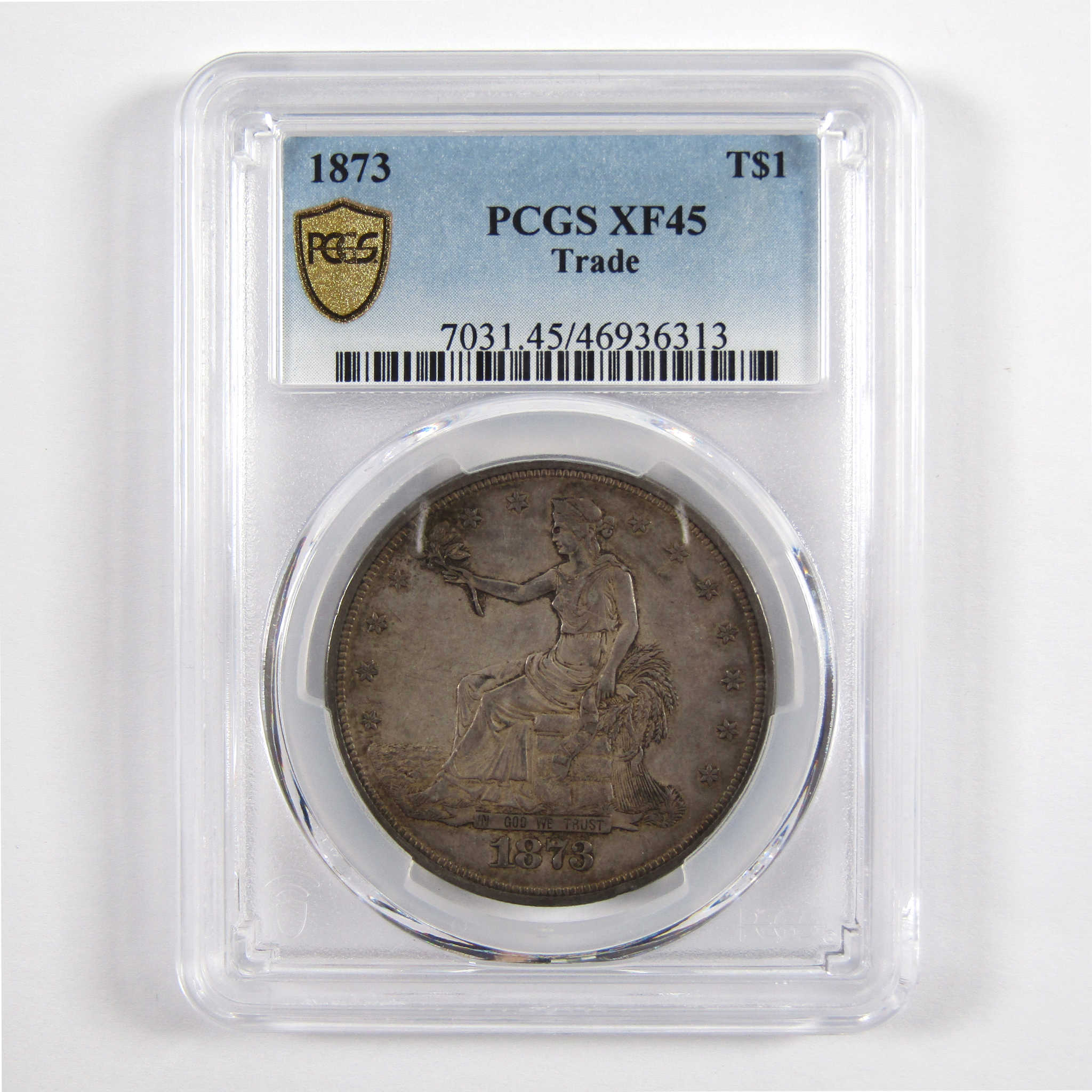
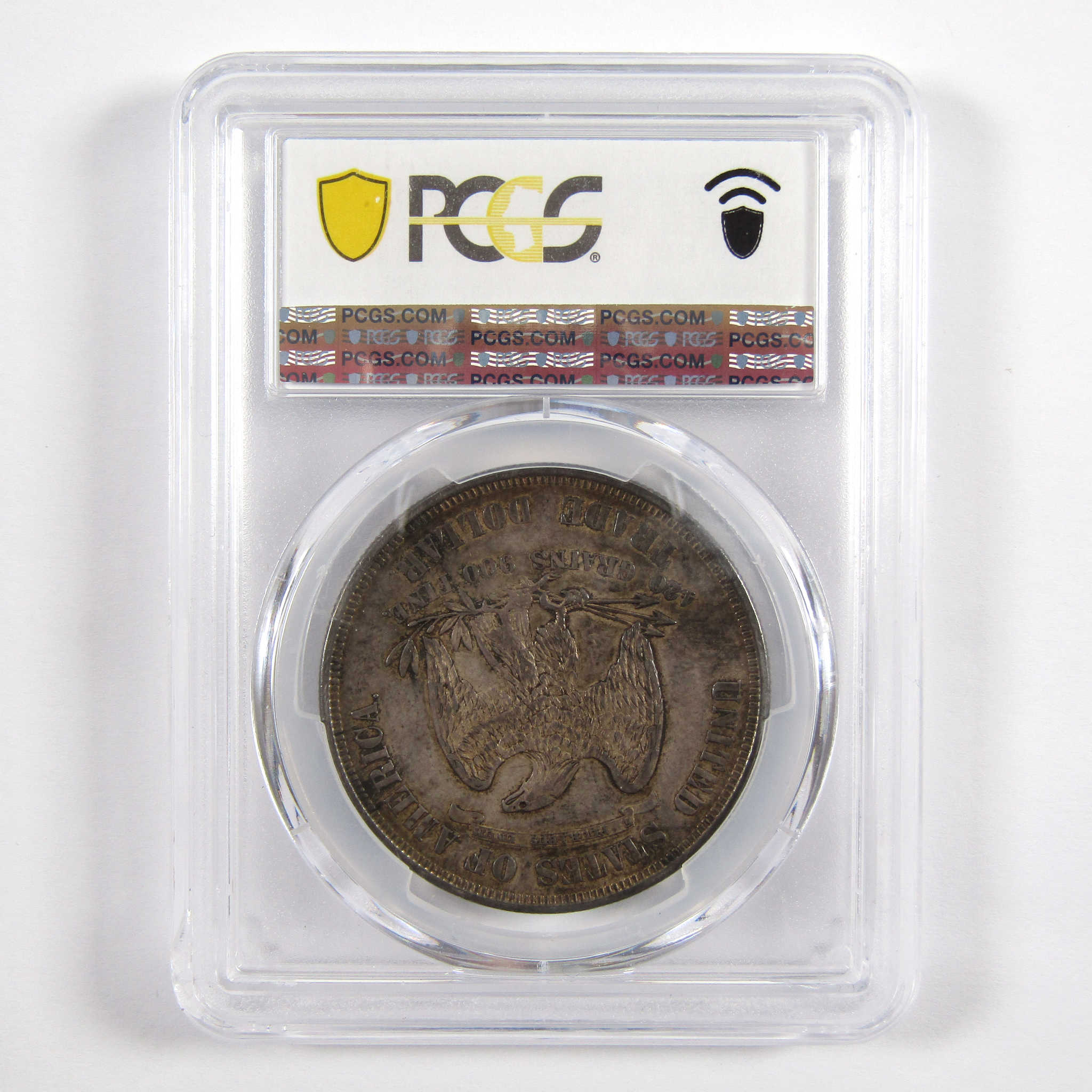
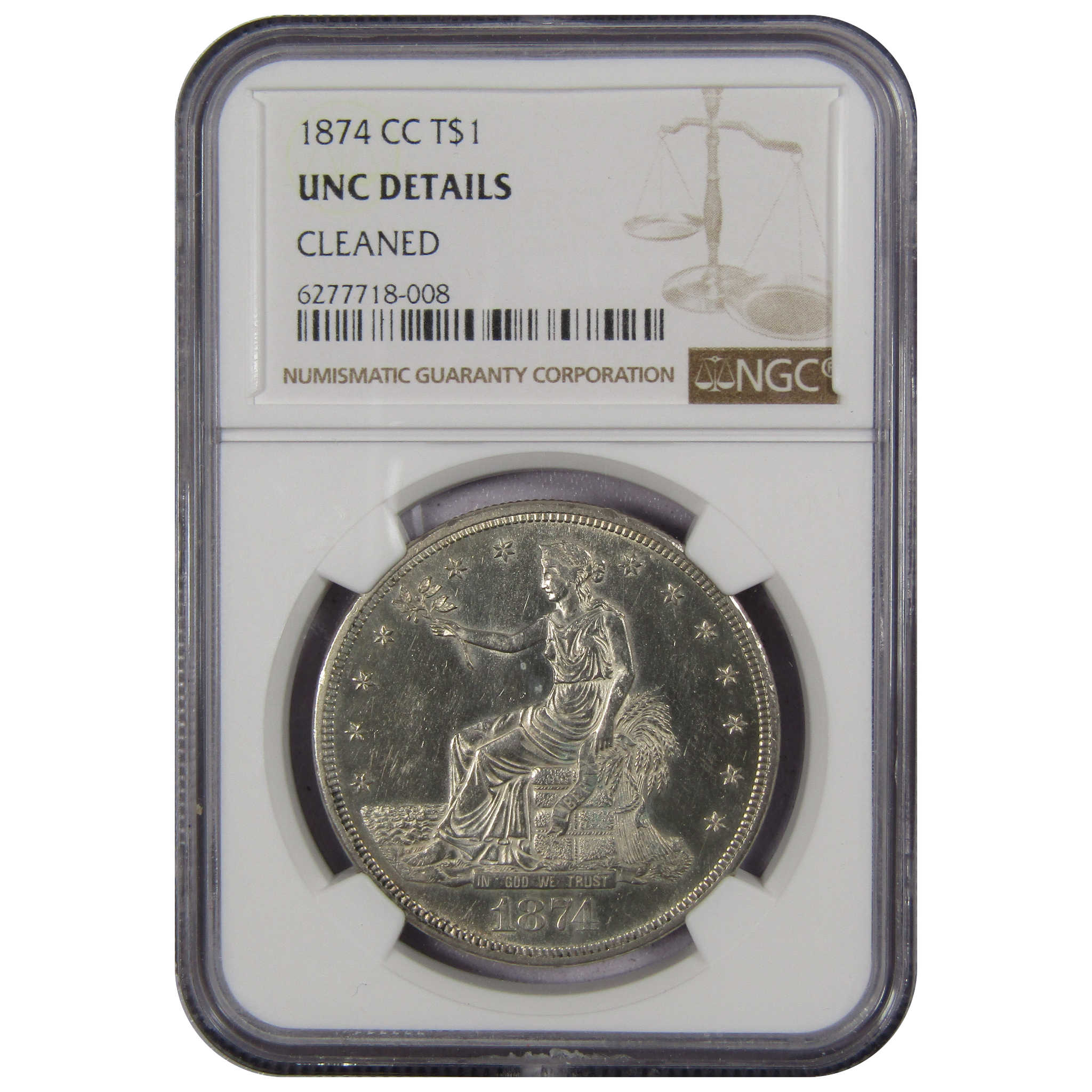
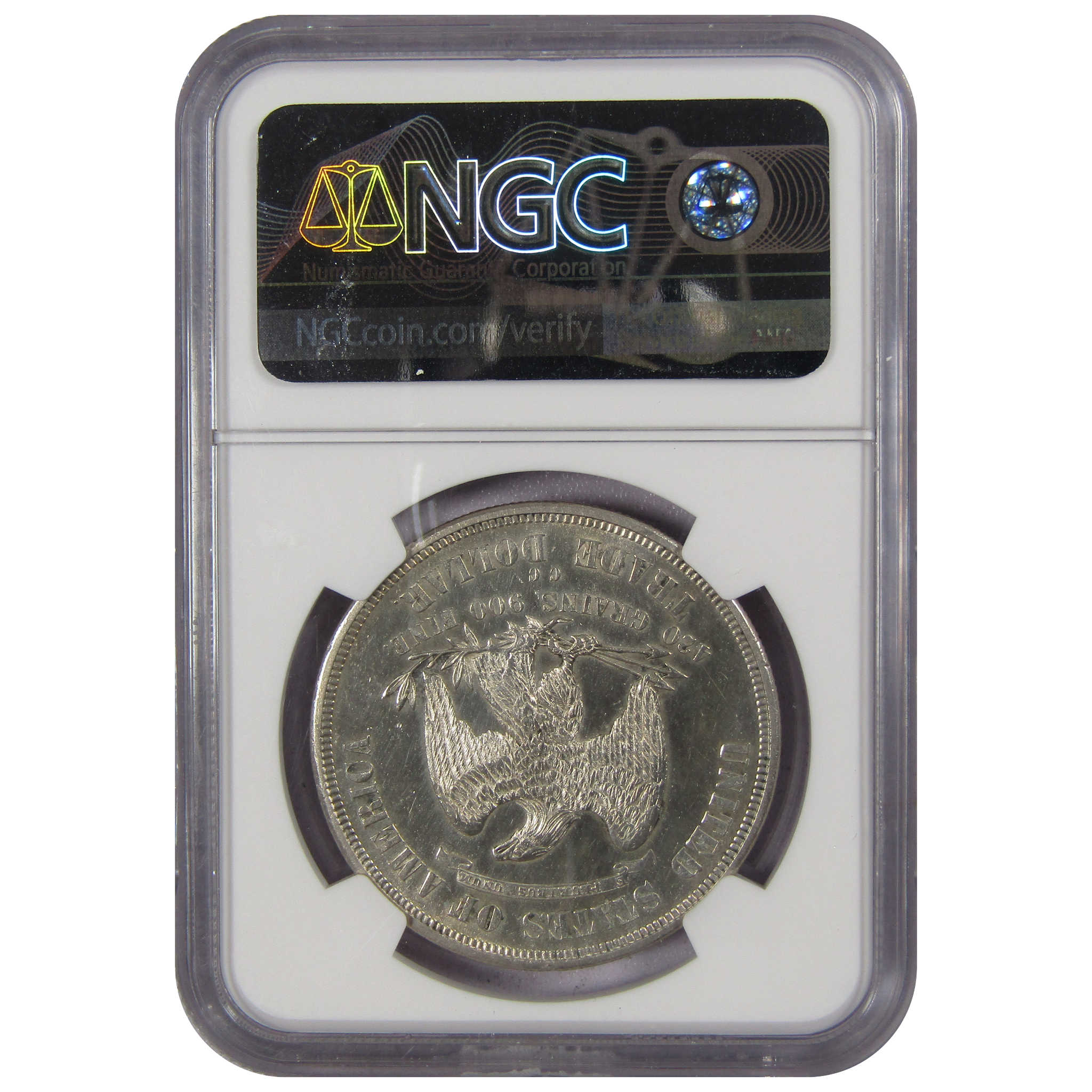
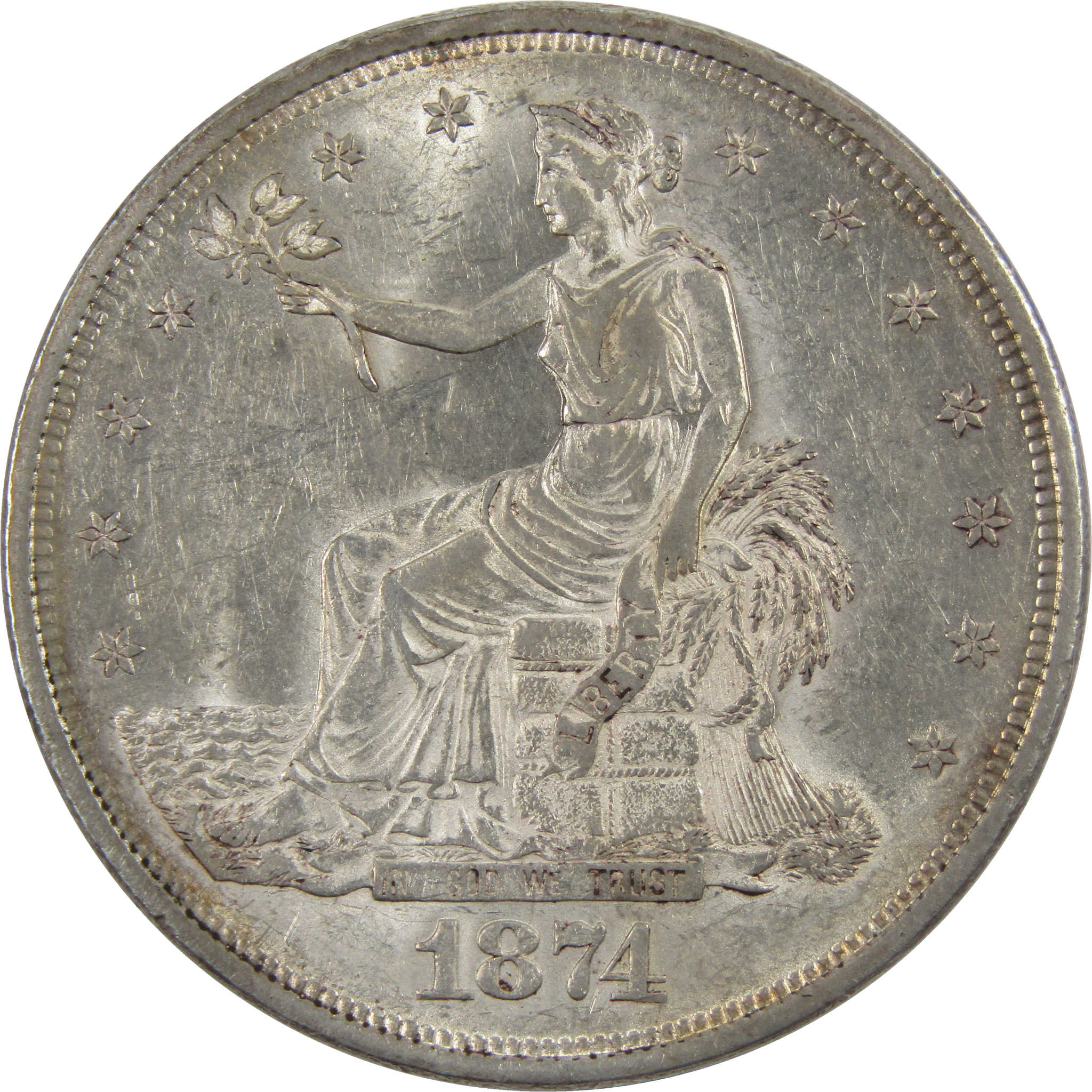
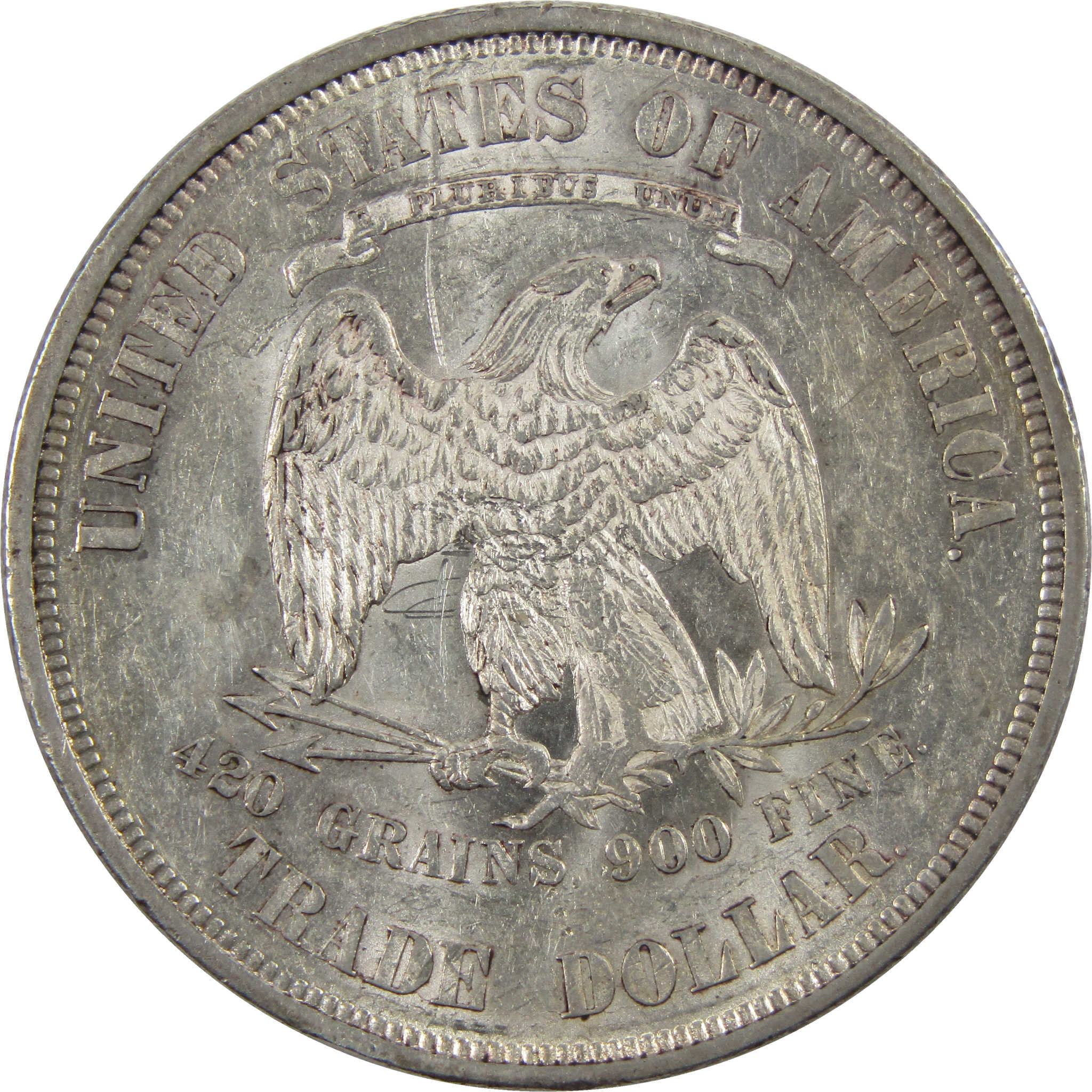
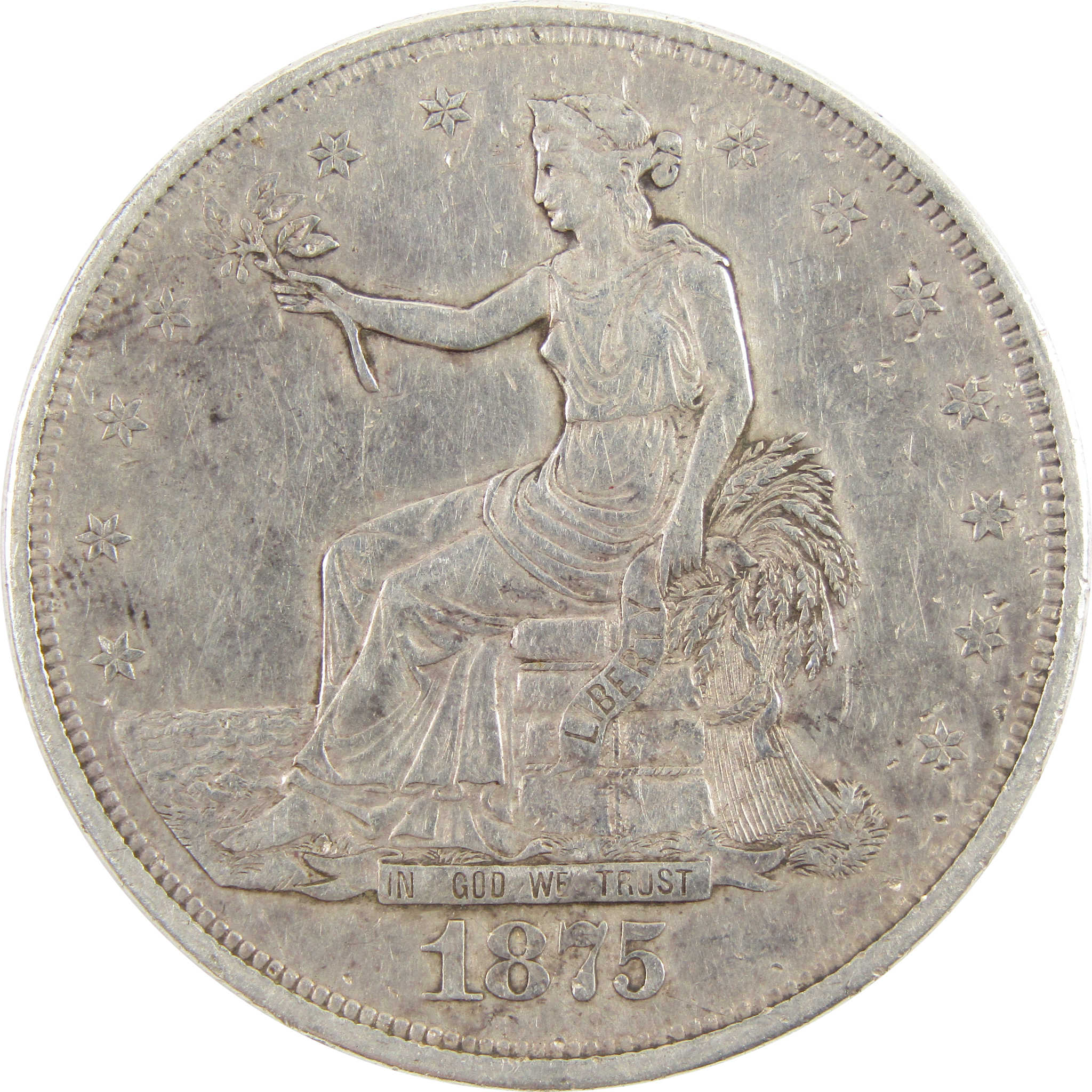
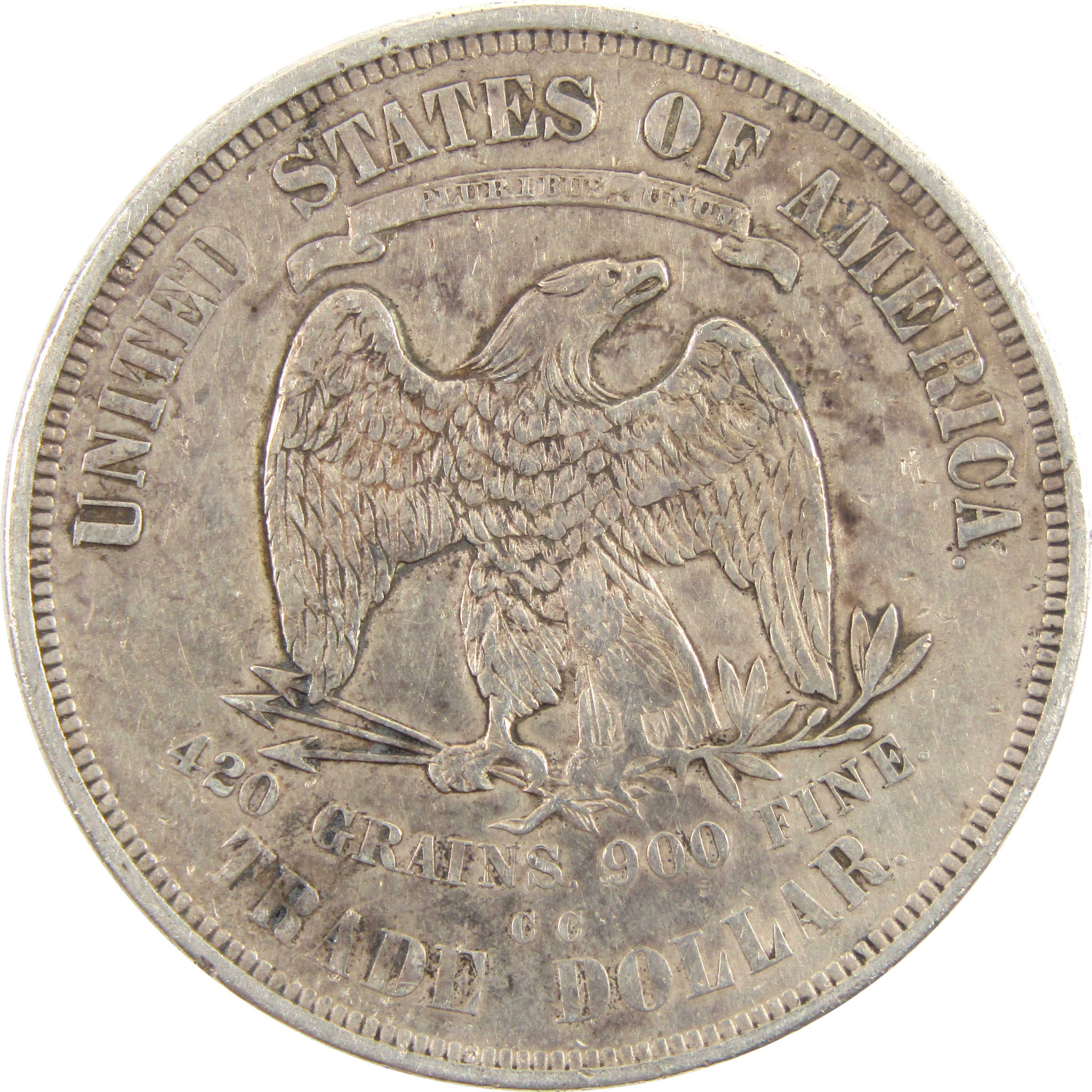


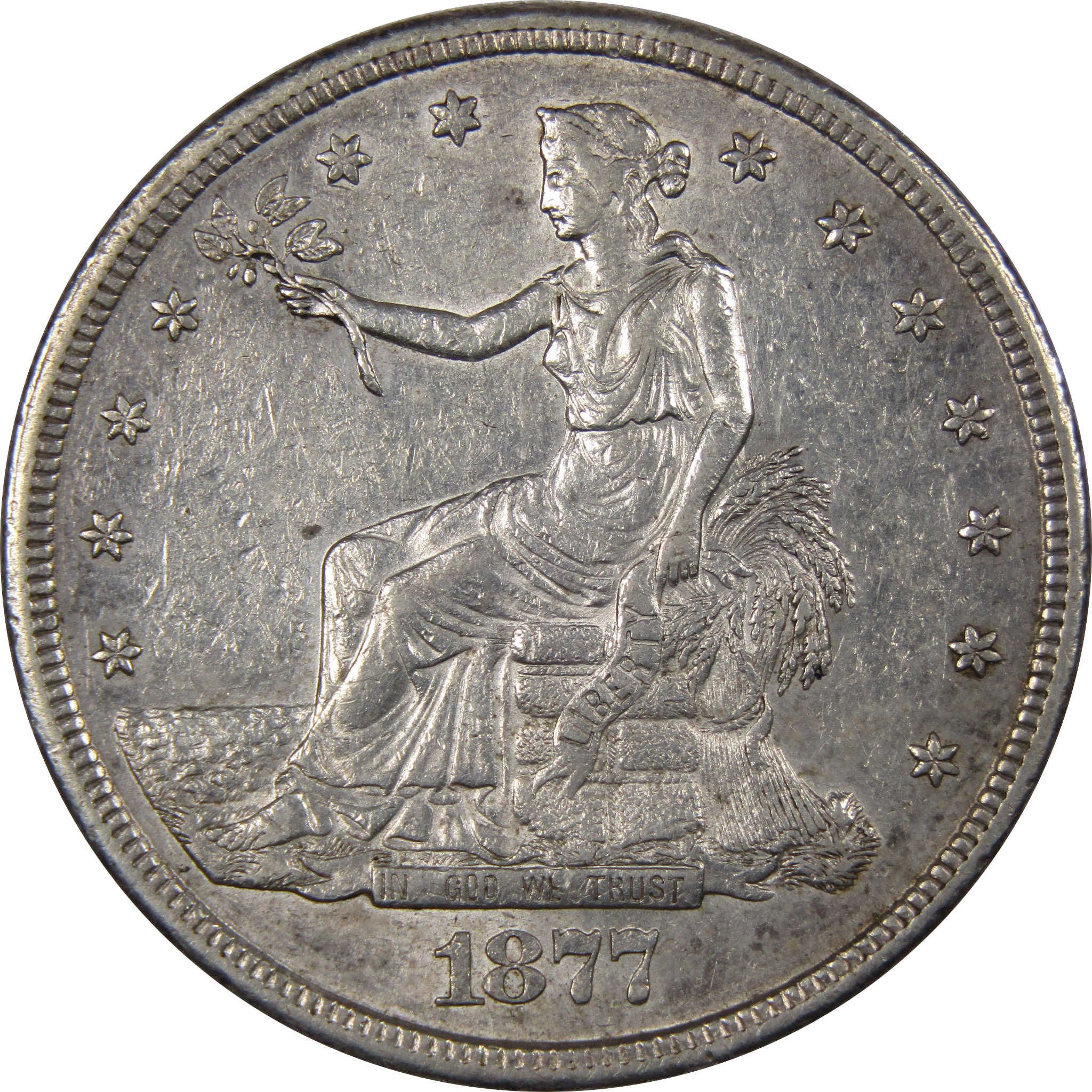
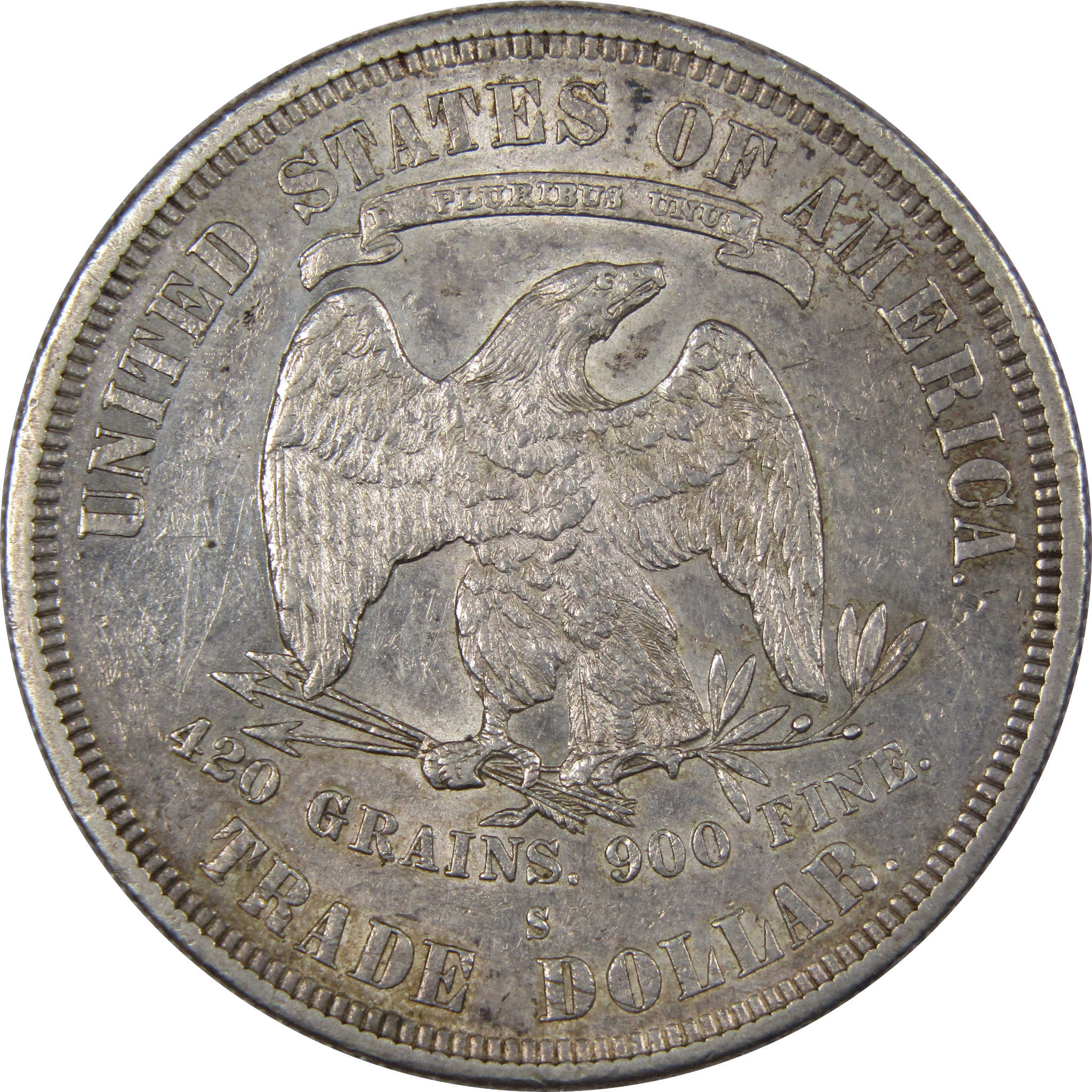
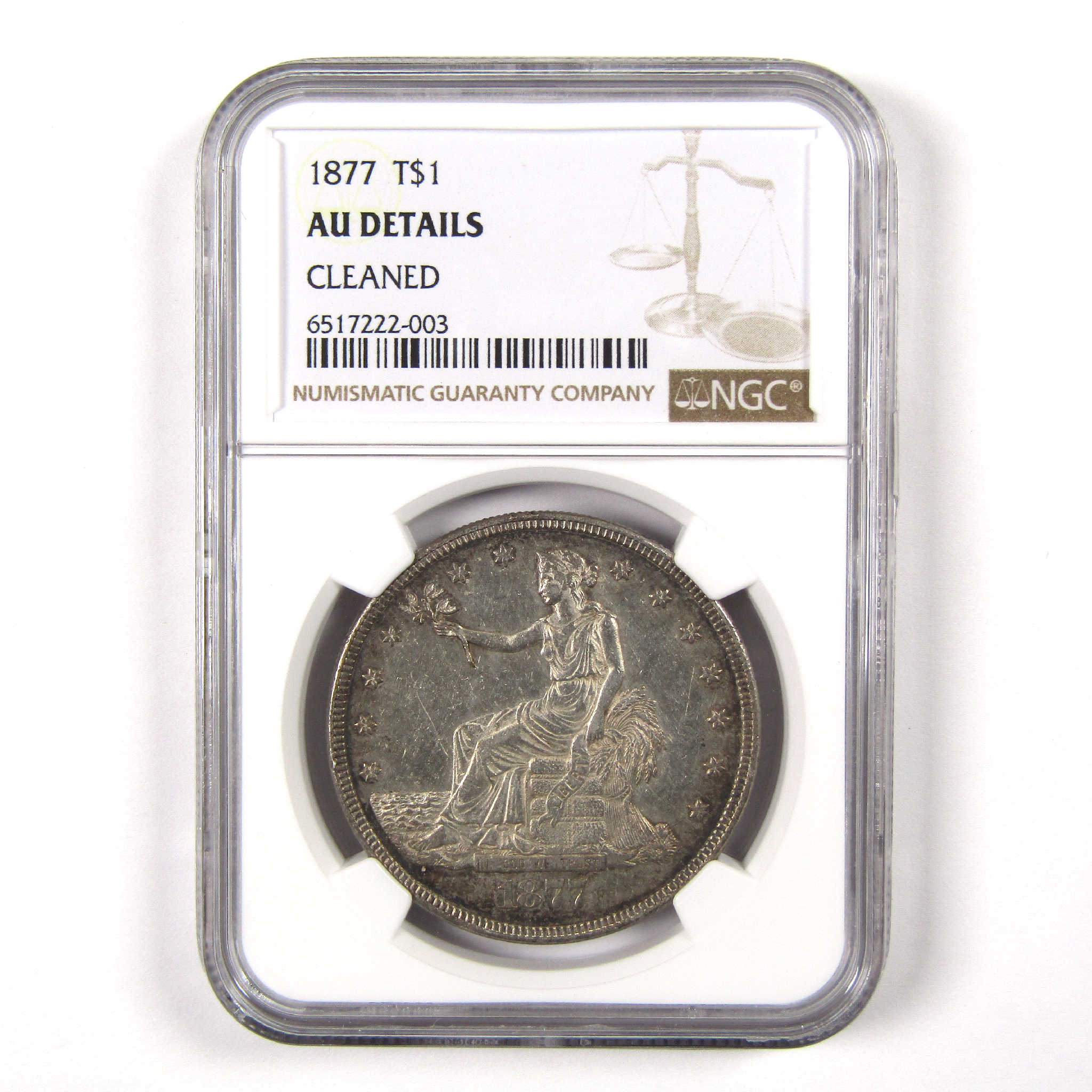
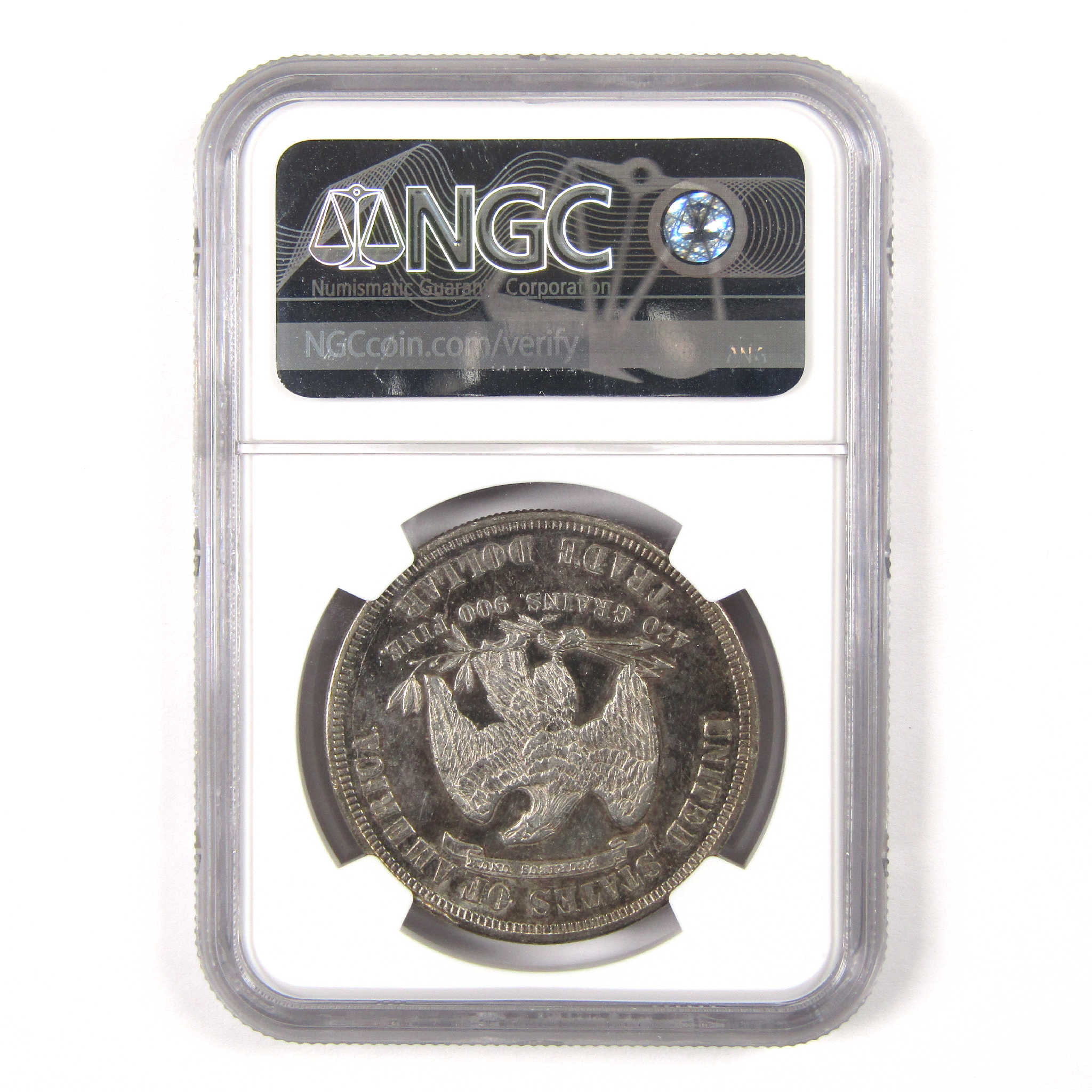
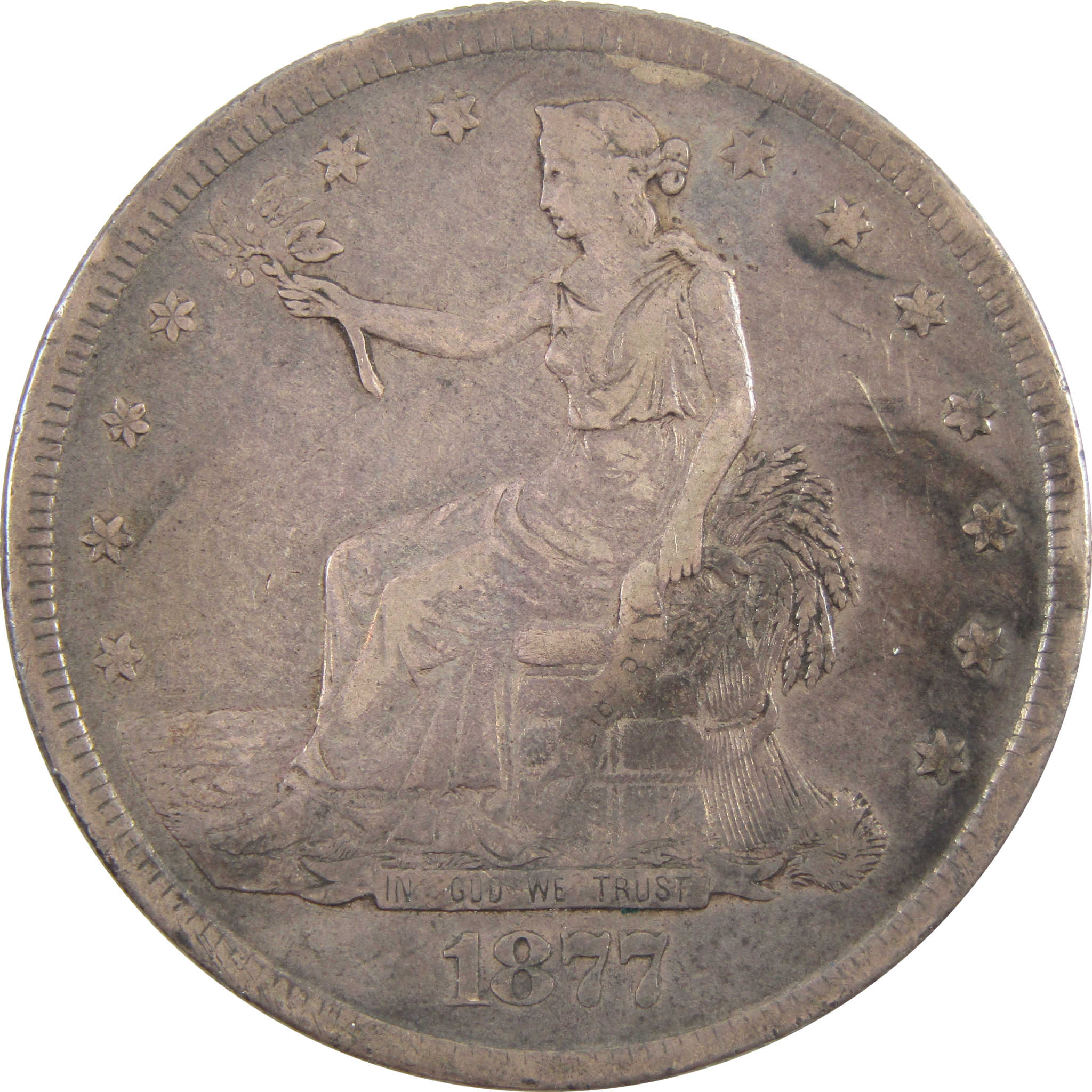
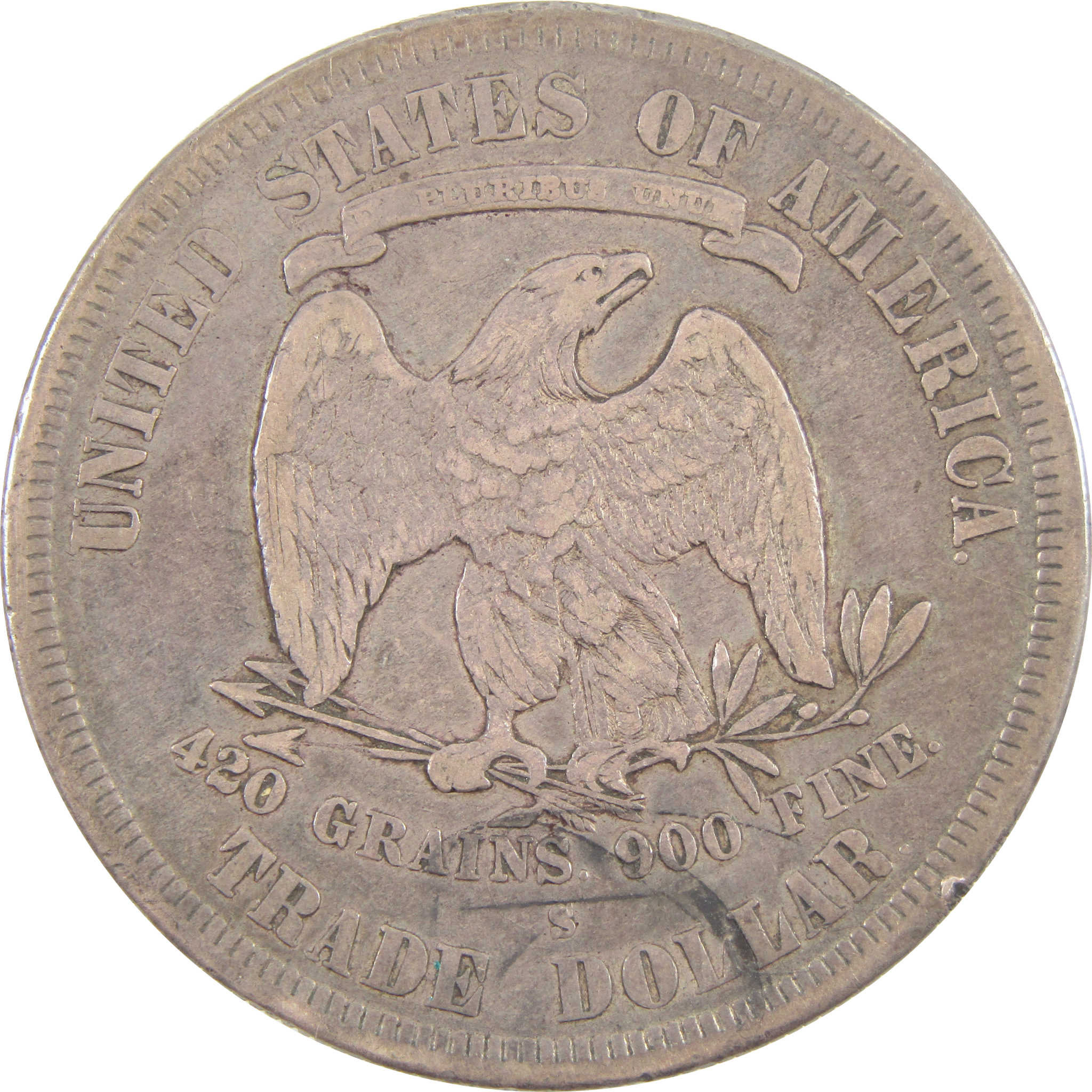
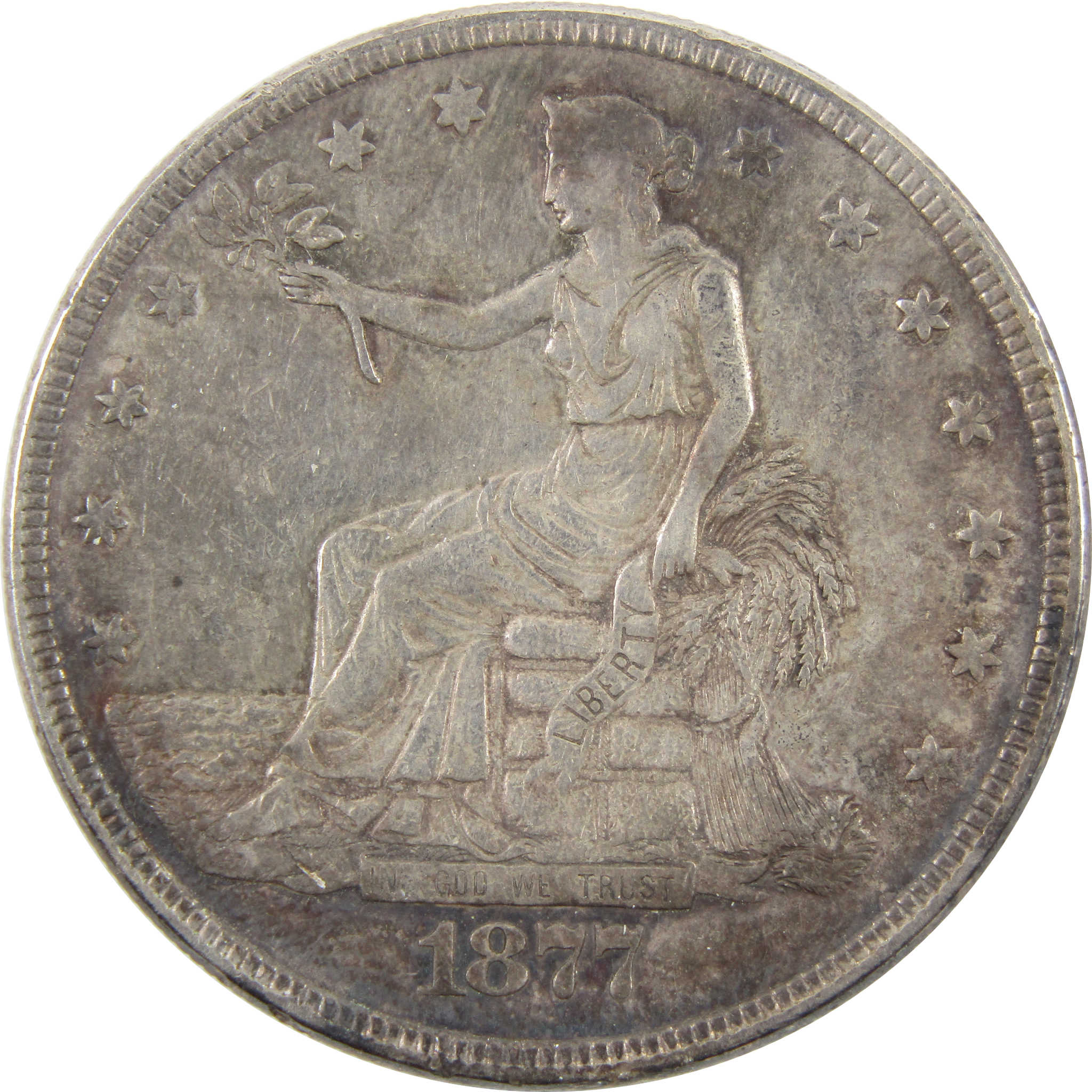
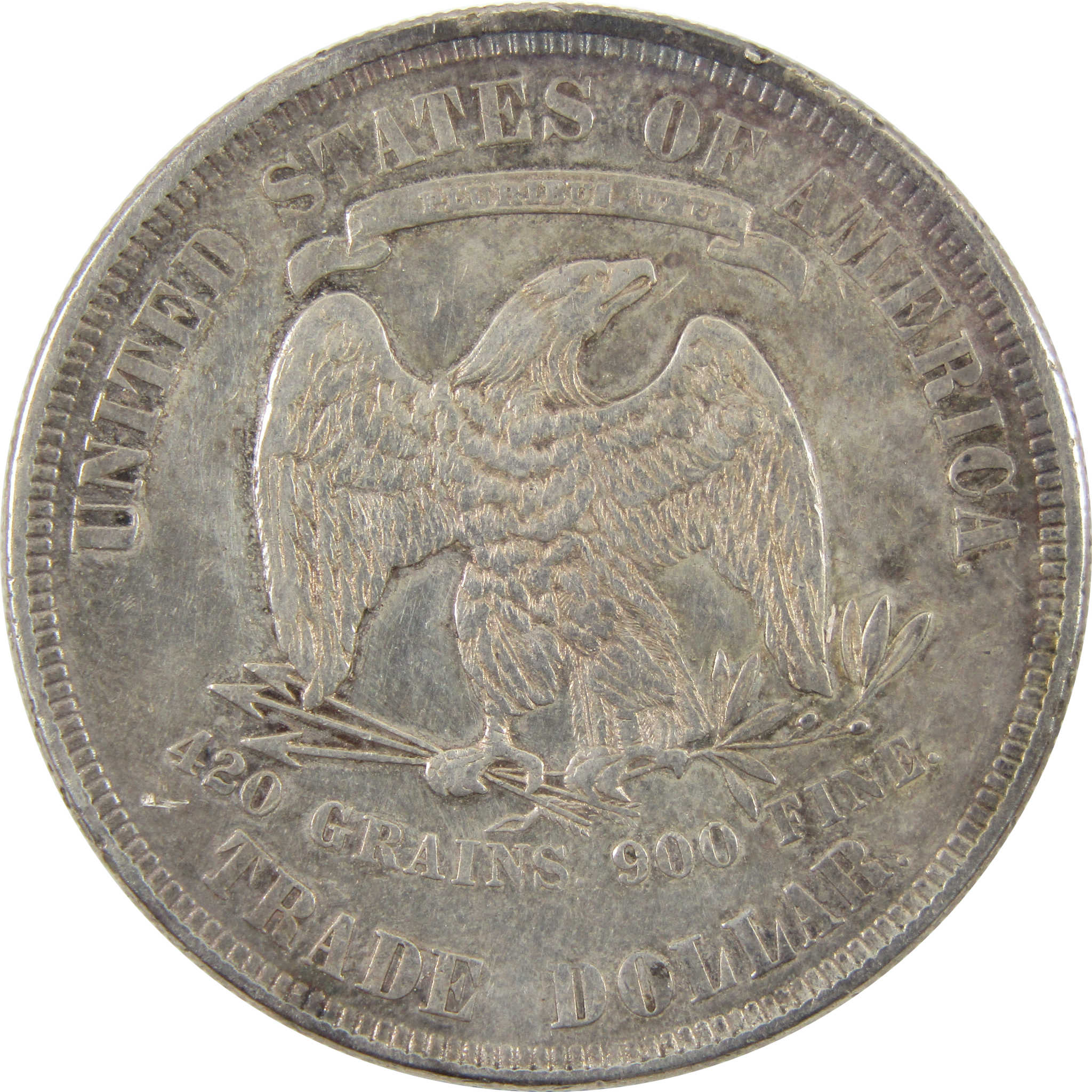
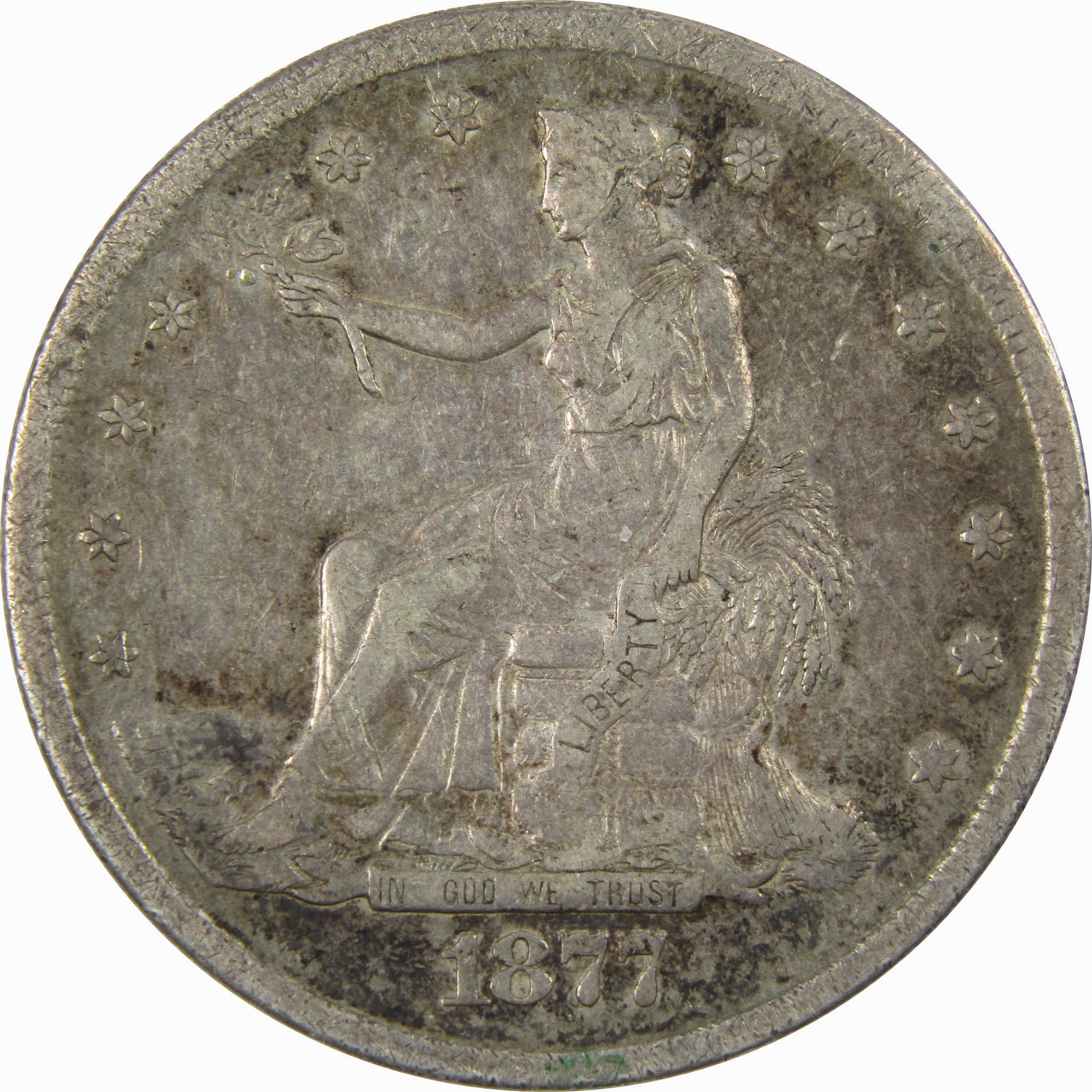
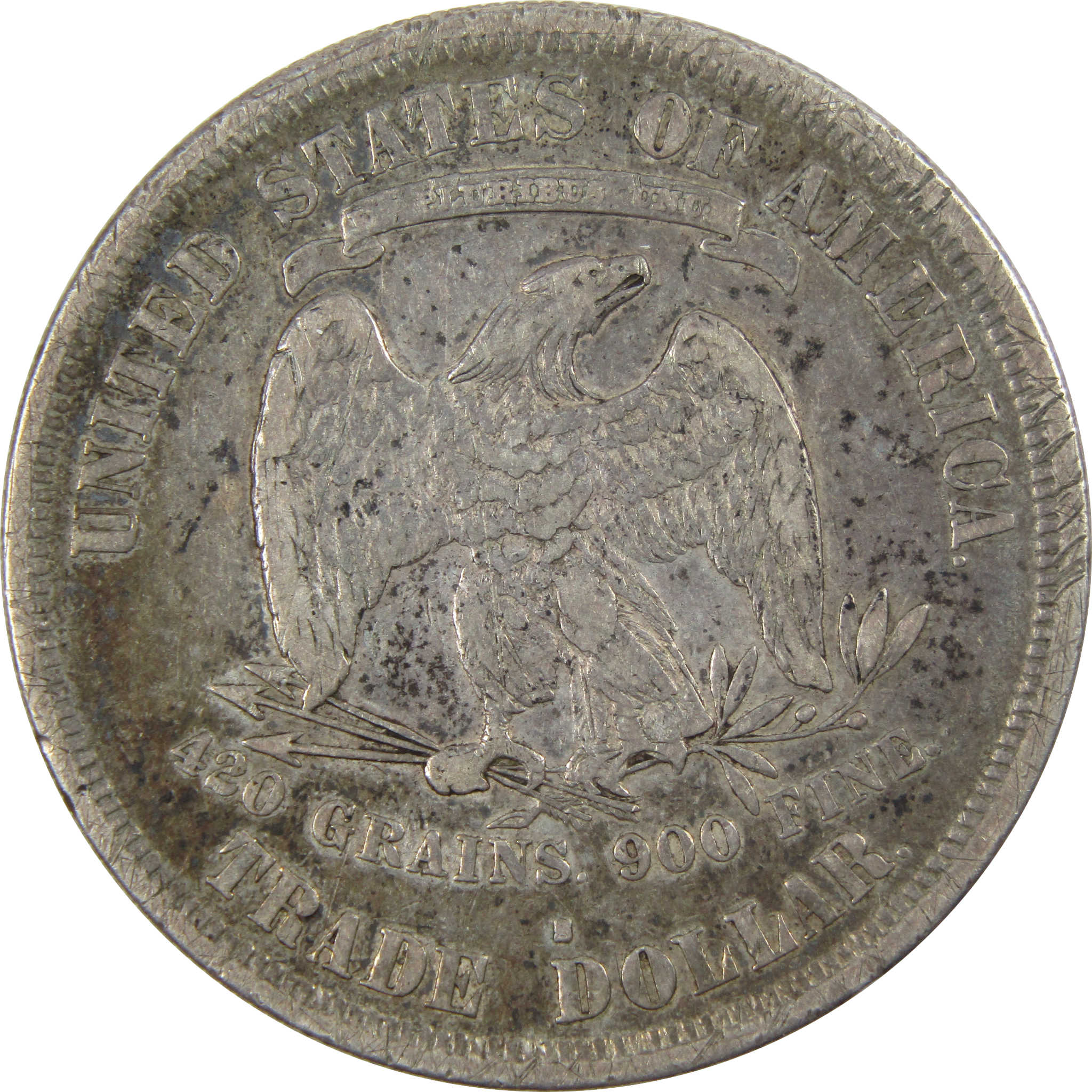
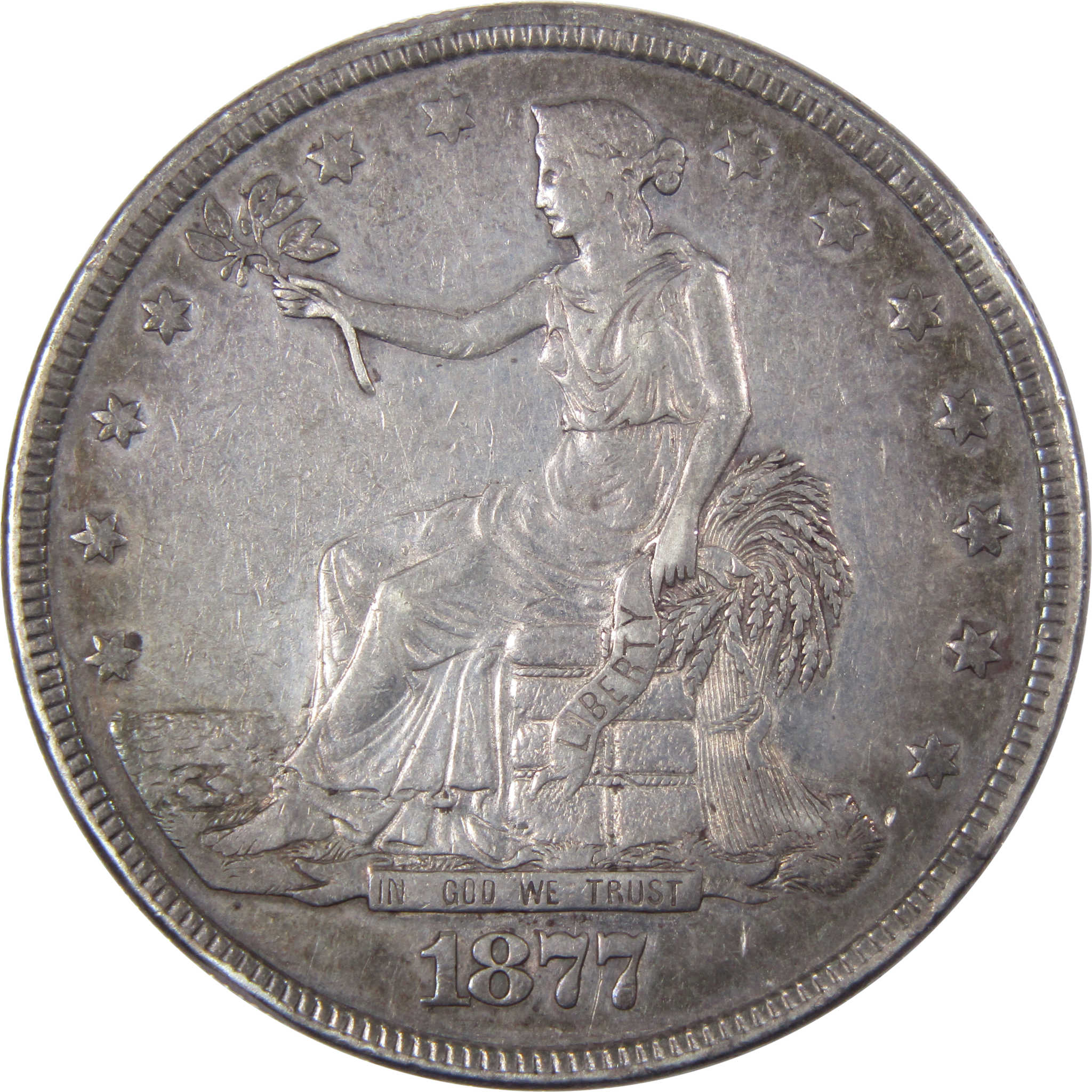
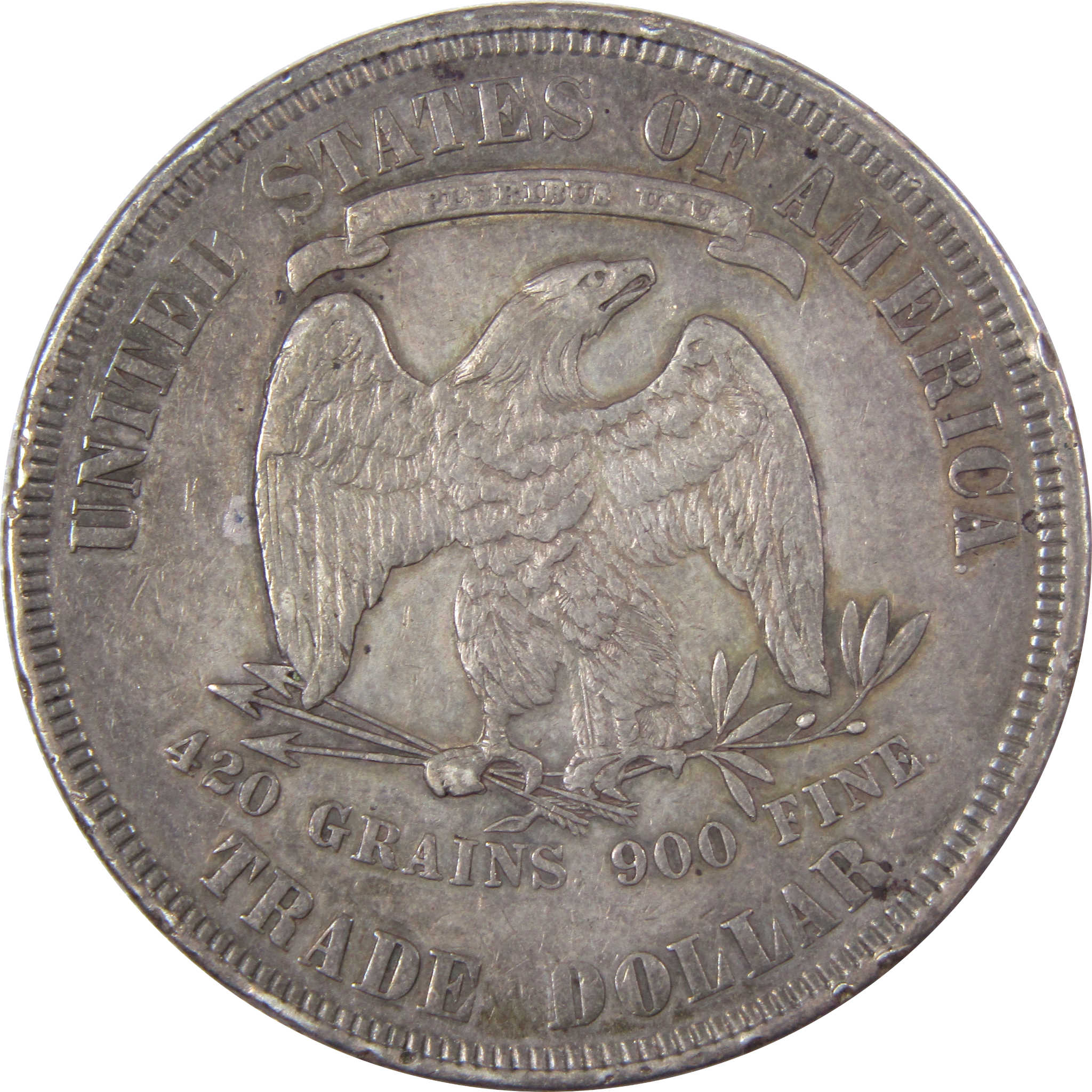
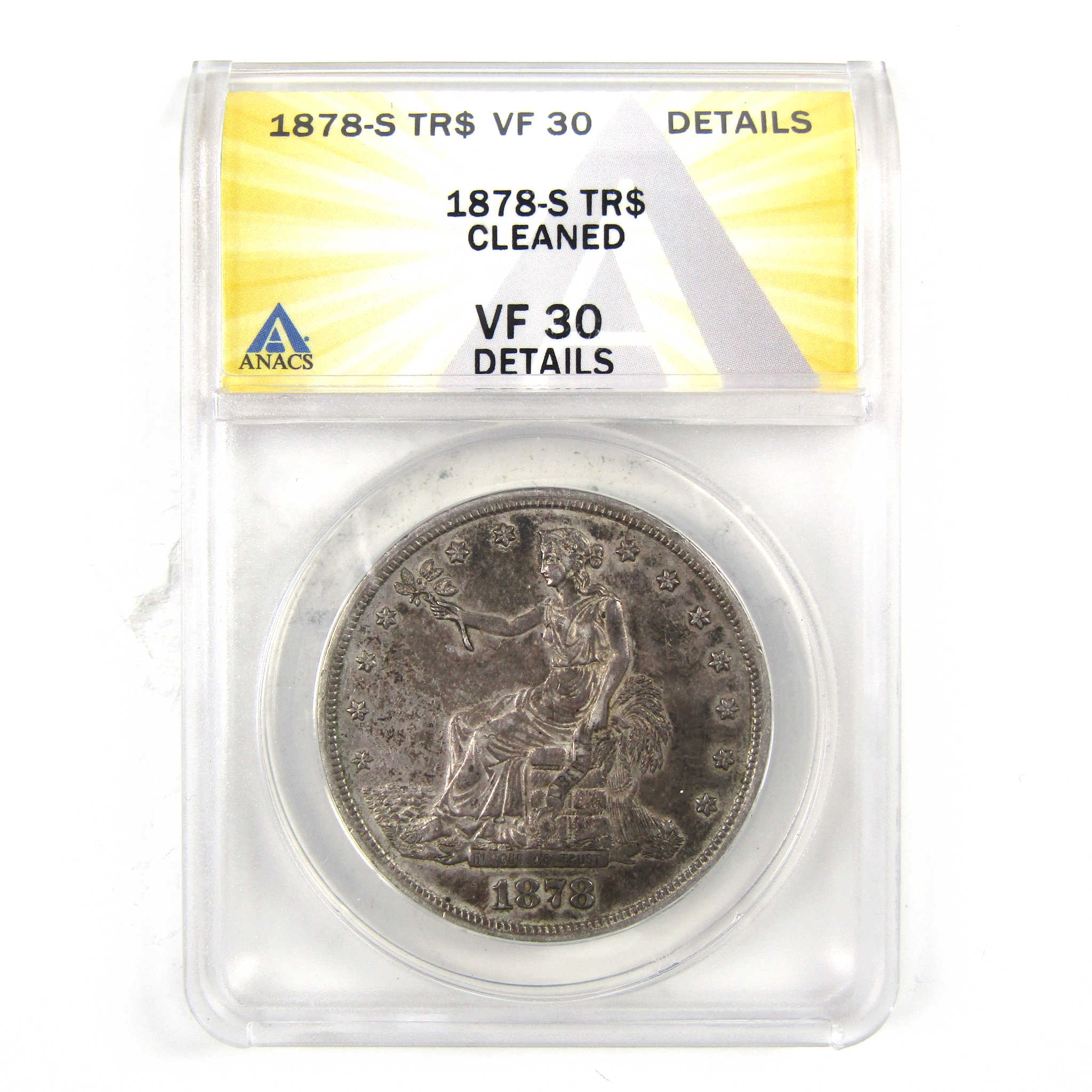
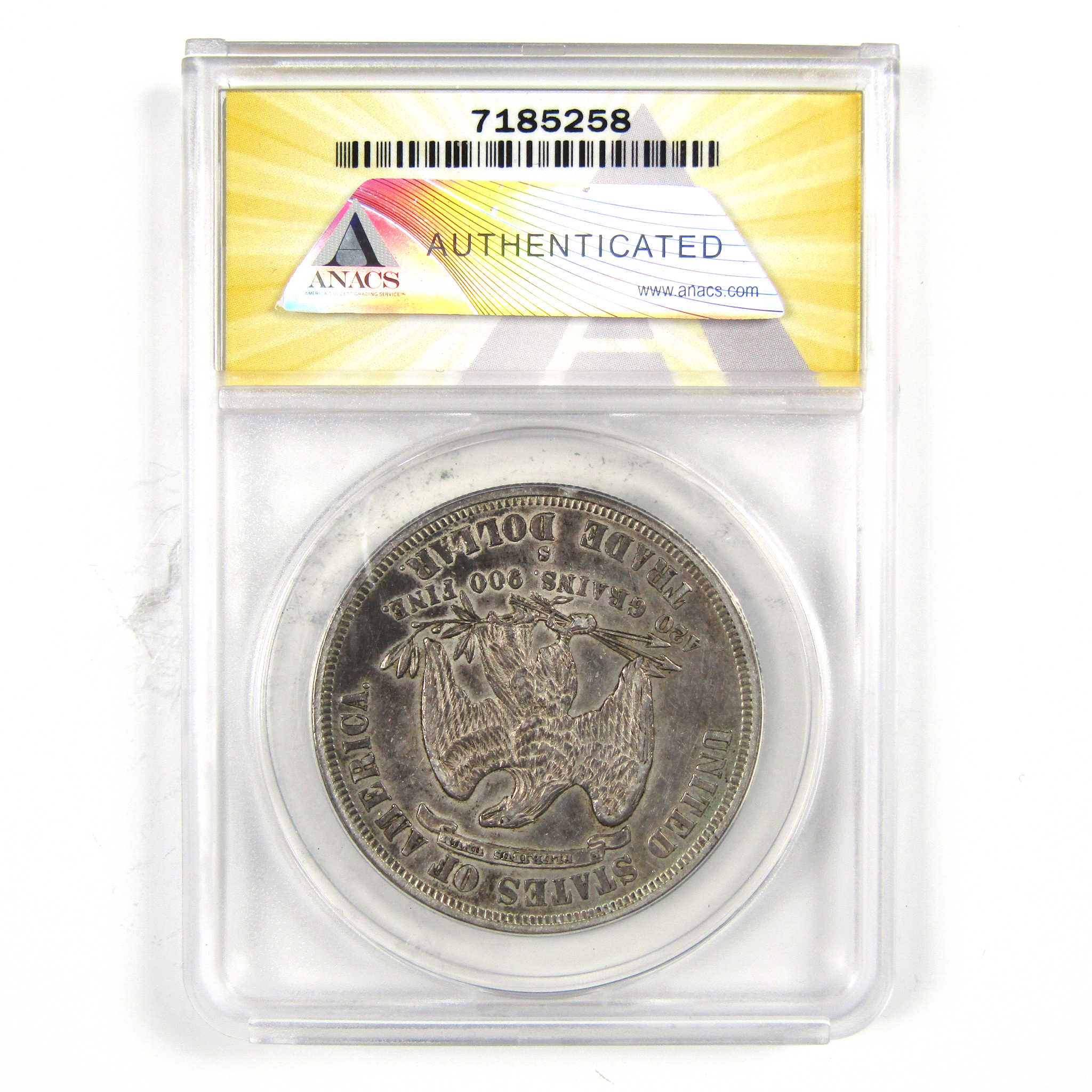
Trade Dollar (1873-1885): A Brief History
The U.S. Trade Dollar was a silver coin that was issued by the United States Mint from 1873 to 1885. The Trade Dollar was introduced to compete with the widespread use of Mexican silver coins, such as the Mexican Peso, in East Asia. The United States hoped to establish its own presence in the region and facilitate trade with the growing economies of China and Japan.
Trade Dollars were larger and heavier than the standard U.S. silver dollars, weighing 420 grains (27.2 grams) with a diameter of 38.1 millimeters (about 1.5 in). They were composed of 90% silver and 10% copper, giving them a silver content of 0.7874 troy ounces.
The obverse side of the Trade Dollar featured a depiction of Liberty seated on a bale of merchandise, symbolizing international trade. Liberty held an olive branch in her right hand and a scroll inscribed with the word "LIBERTY" in her left hand. The reverse side displayed an eagle with outspread wings, clutching arrows and an olive branch. Surrounding the eagle were the inscriptions "UNITED STATES OF AMERICA" and "TRADE DOLLAR," along with the denomination "420 GRAINS, 900 FINE" indicating the silver content.
While Trade Dollars were primarily intended for use in foreign trade, they also circulated within the United States. However, the value often fluctuated due to concerns about the weight and purity of the coins. Some traders and speculators would discount the coins, leading to their widespread acceptance at less than their face value. Pieces that circulated in the Orient were often counter stamped with Oriental characters, known as chopmarks.
In 1878, the U.S. government suspended the coinage of Trade Dollars due to declining silver prices and disruptions caused by their domestic circulation. However, production briefly resumed in 1879 to meet commercial demand before eventually ending in 1885. By that time, the Trade Dollar had lost its legal tender status, and it was no longer produced by the United States Mint. In 1887, the U.S. Treasury redeemed Trade Dollars that had not been mutilated.
Today, the Trade Dollar is highly sought after by collectors and numismatists due to its historical significance and unique design. These coins represent an important chapter in American monetary history and remain a tangible symbol of the country's trade relationships with East Asia during the late 19th century.
